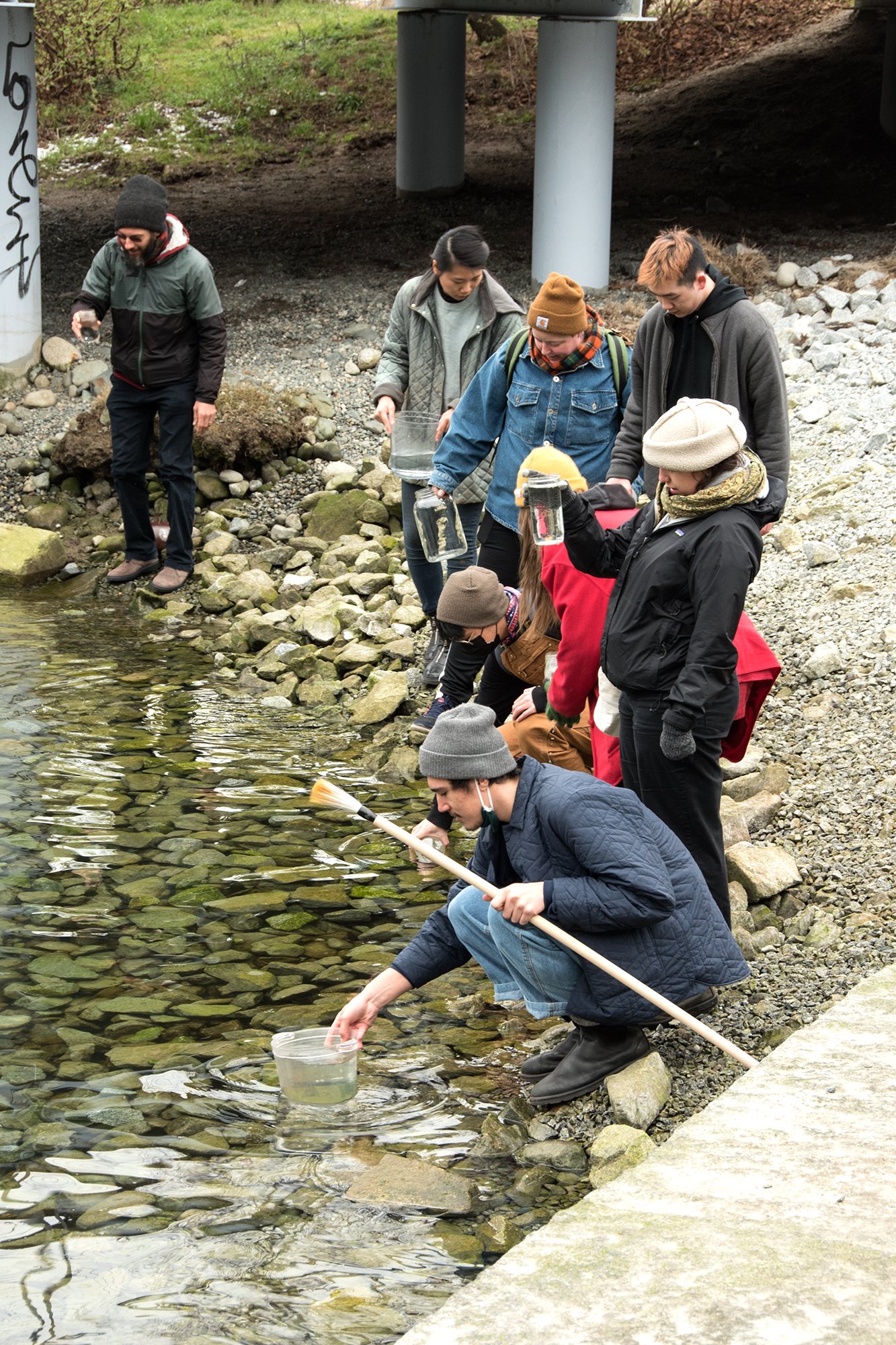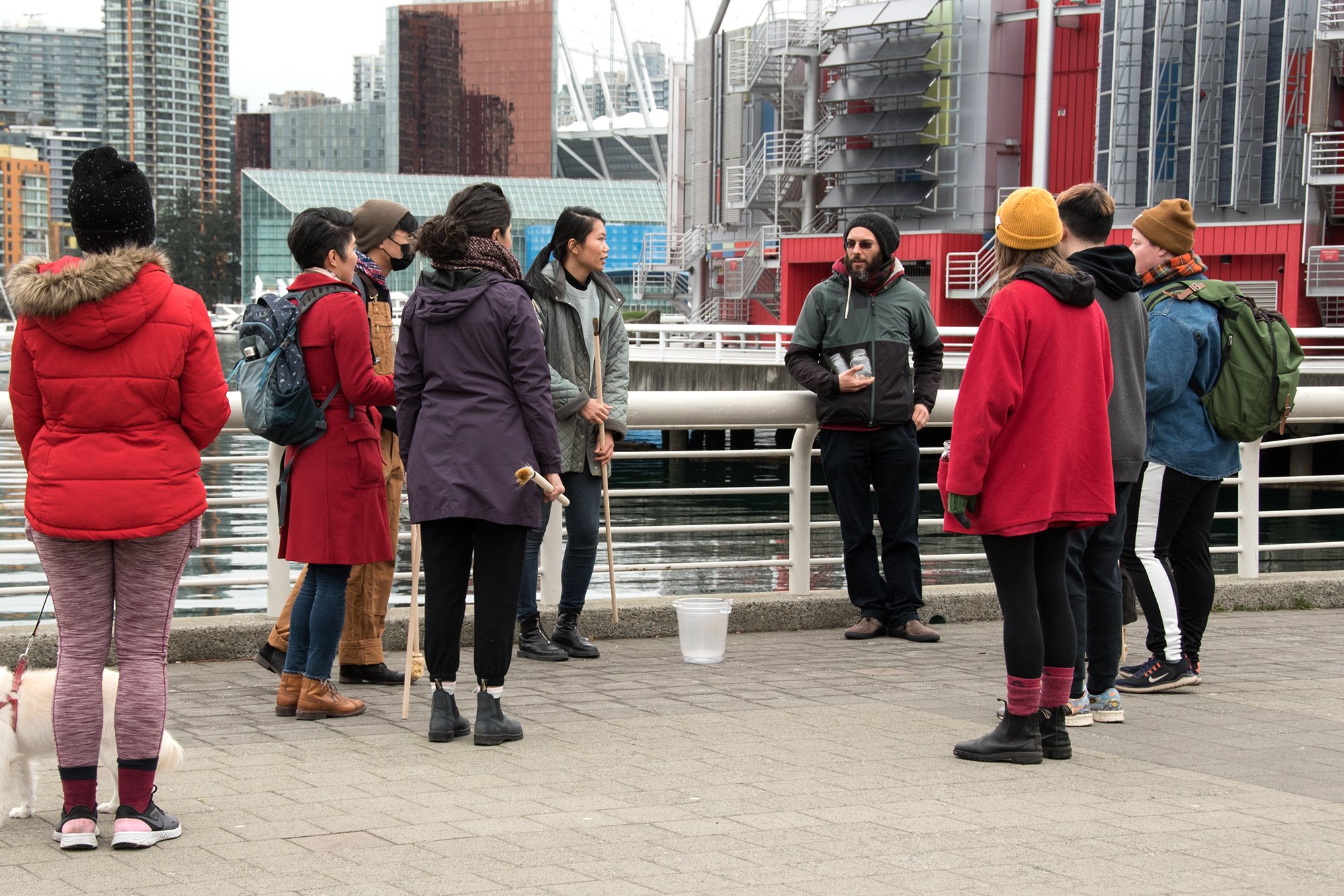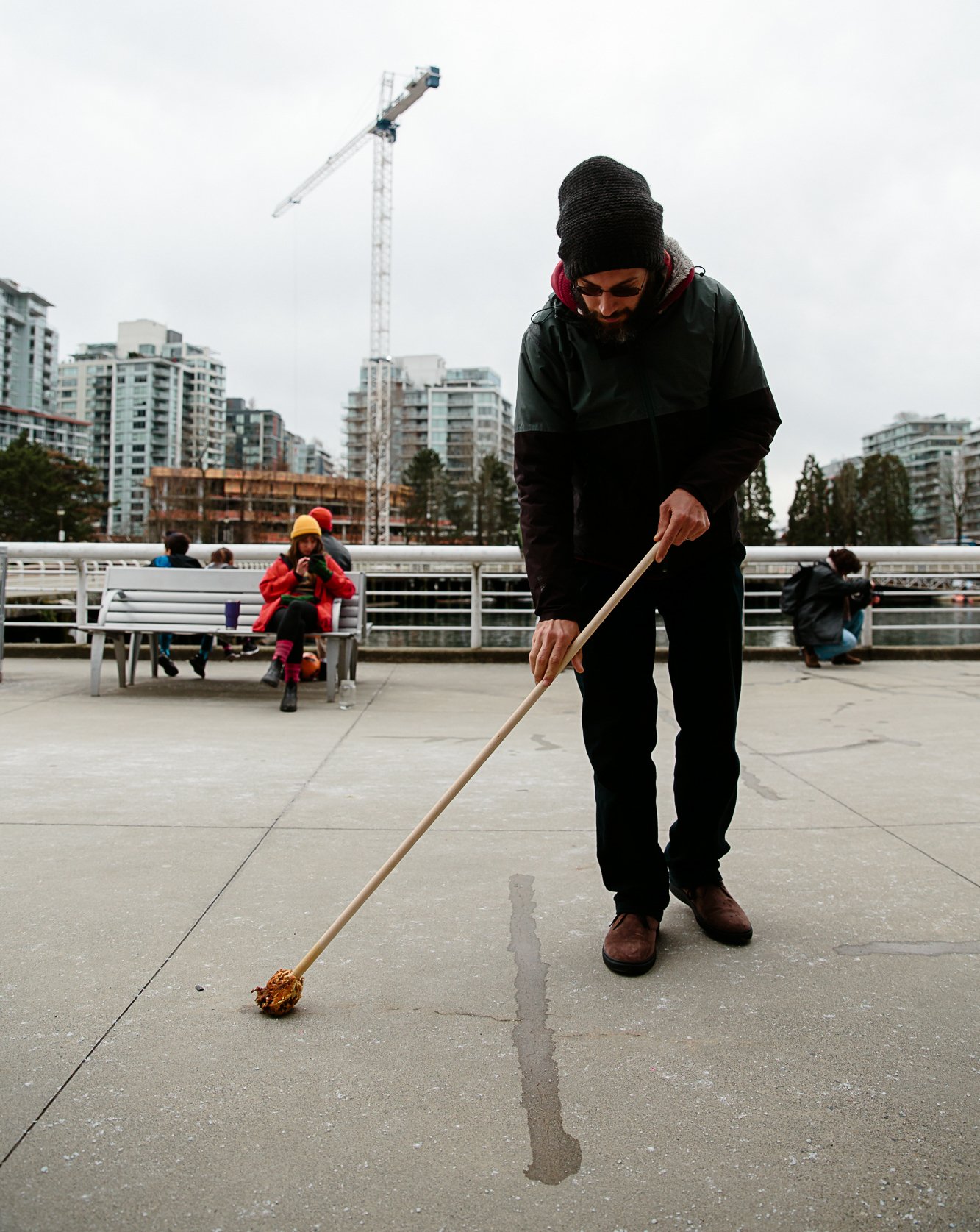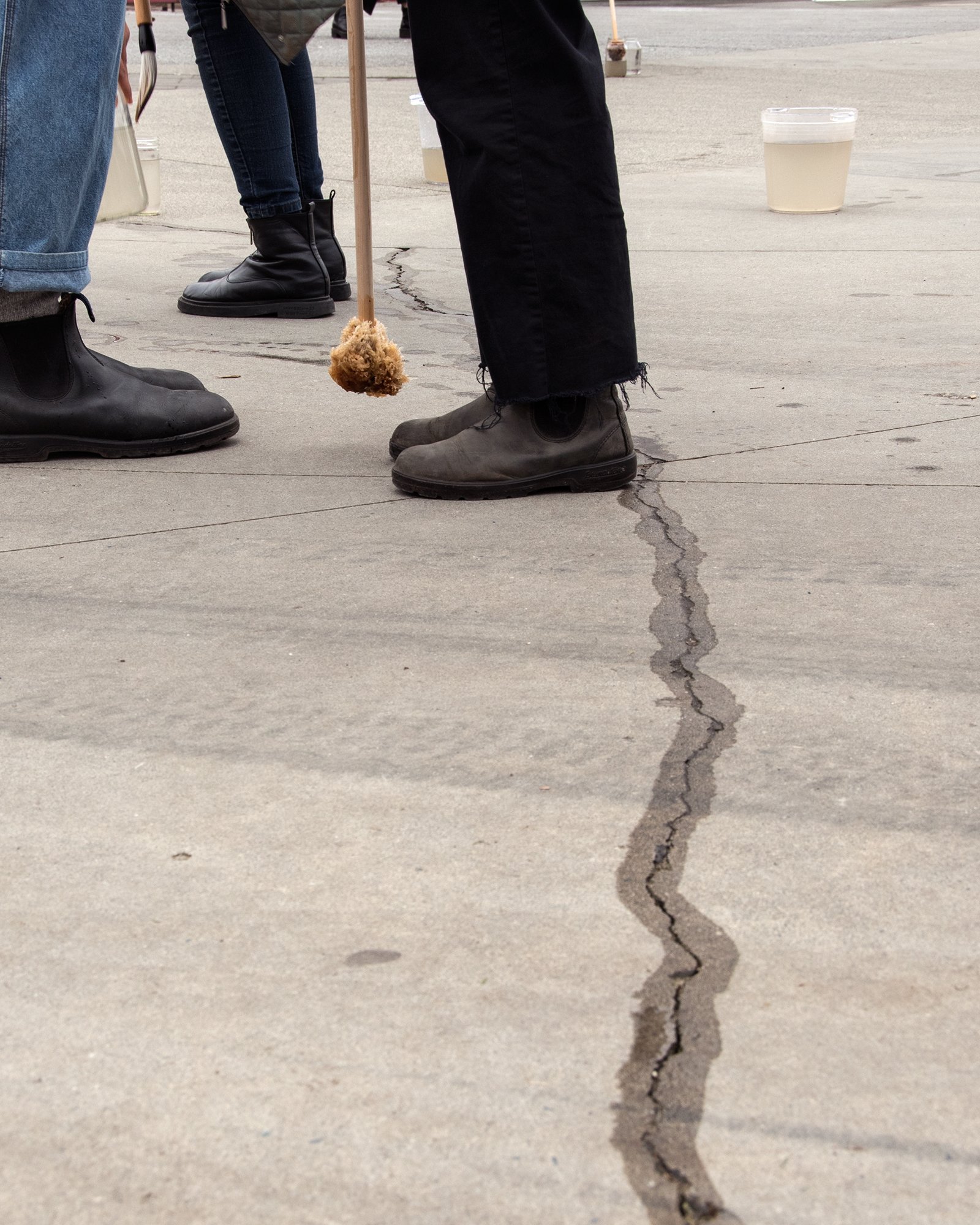






Watering Cracks
A site-responsive, participatory performance
[Photos by Alison Boulier & Nicole Hawkins]
When Lou Sheppard invited me to respond materially to False Creek, I recalled the minute fissures in pavements carved by pathways of rainwater that I noticed during Mend Walks. And I knew I wanted to engage with the cracks at False Creek. Drawn to the opportunity to study them more closely, I considered hosting a workshop for mapping cracks through the process of rubbing.
But the more I read and reflected on the site, the more deeply I sensed the immensity of historical and geological time embedded in False Creek. The land that is now Vancouver’s urban waterfront used to be an ecologically rich and diverse waterway shared by the Musqueam, Squamish and Tsleil-Waututh peoples. That hard edge of concrete was part of an intertidal zone shaped by the movement of water, as the tides rose and fell twice a day, pulled by moon and sun.
As a newcomer to Canada, and a guest to both Lou’s project and the site of False Creek, I hesitated to map out the cracks at False Creek. I wondered if we begin to think that we know the moment we begin to record and categorize places on a map. I wanted to keep that openness and humility of not knowing. As I continued to go on Mend Walks, it struck me that my material response to False Creek could simply be to observe and pay attention to the creek water itself.
Together with Fieldschool and friends I had made in my time at ECU, we gathered on a Saturday morning to water the cracks along Vancouver’s urban waterfront with borrowed creek water. Using a few tools I made, we patiently traced and retraced minute fissures in the ground, silently reenacting the memory of tidal movements in centuries past. The weekend crowd flowed around us. Some paused to watch; a jogger ran past but took care not to step on any of the cracks we had traced with creek water.
Like many other projects in my practice, this workshop offers the invitation to consider cracks not as a structural flaw, but as the necessary release of tension trapped within or beneath the surface. A rupture that allows new possibilities to arise.
